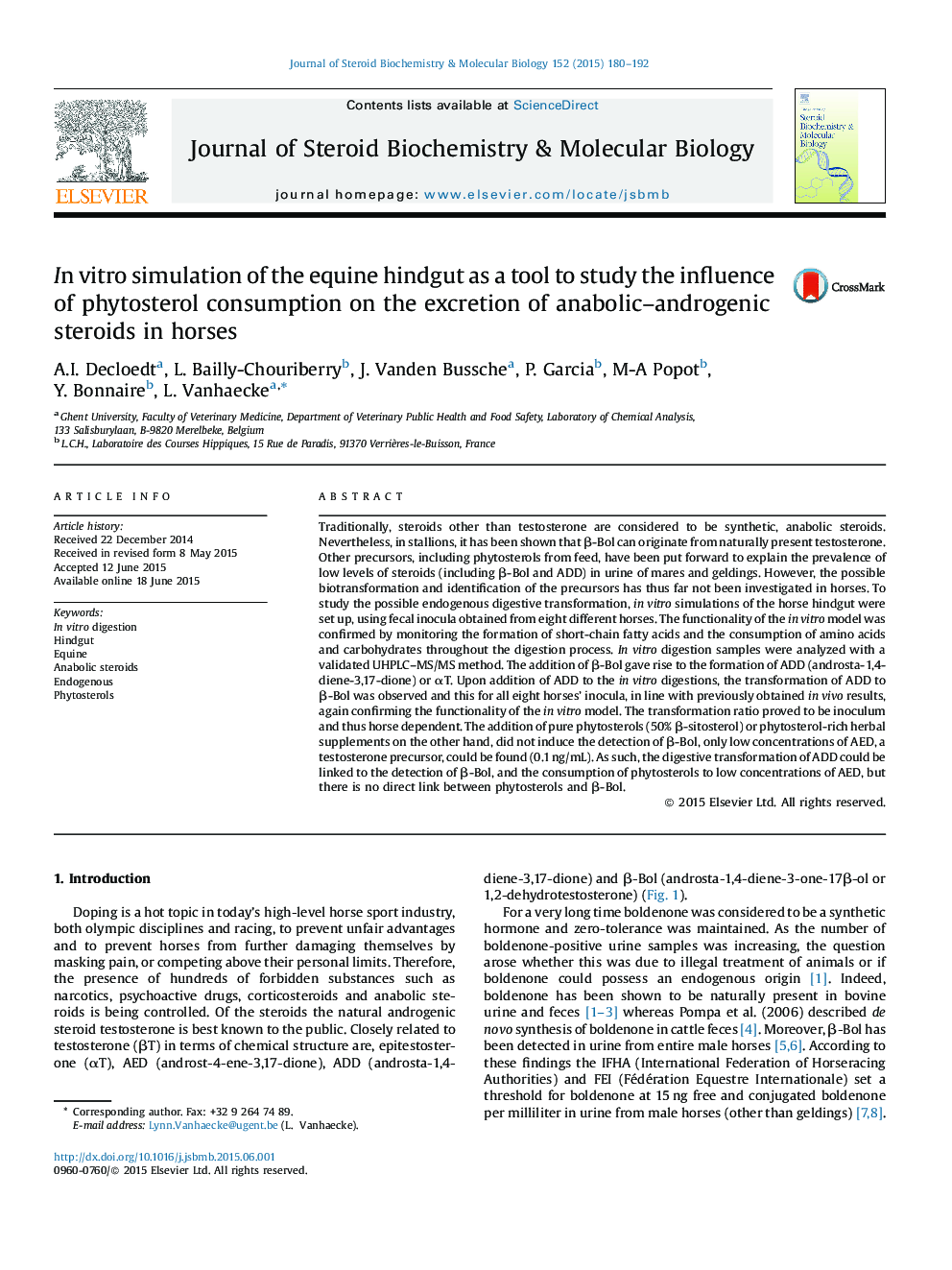| کد مقاله | کد نشریه | سال انتشار | مقاله انگلیسی | نسخه تمام متن |
|---|---|---|---|---|
| 1991350 | 1540997 | 2015 | 13 صفحه PDF | دانلود رایگان |
• Static equine in vitro digestion simulations: proof of concept.
• Supplemented ADD can be transformed to β-Bol by the intestinal microbiota.
• In vitro digestions link phytosterol consumption to the detection of AED.
• Both AED and ADD are steroids suspected to be β-Bol precursors.
• Biotransformation ratios of ADD to β-Bol and phytosterols to AED are horse dependent.
Traditionally, steroids other than testosterone are considered to be synthetic, anabolic steroids. Nevertheless, in stallions, it has been shown that β-Bol can originate from naturally present testosterone. Other precursors, including phytosterols from feed, have been put forward to explain the prevalence of low levels of steroids (including β-Bol and ADD) in urine of mares and geldings. However, the possible biotransformation and identification of the precursors has thus far not been investigated in horses. To study the possible endogenous digestive transformation, in vitro simulations of the horse hindgut were set up, using fecal inocula obtained from eight different horses. The functionality of the in vitro model was confirmed by monitoring the formation of short-chain fatty acids and the consumption of amino acids and carbohydrates throughout the digestion process. In vitro digestion samples were analyzed with a validated UHPLC–MS/MS method. The addition of β-Bol gave rise to the formation of ADD (androsta-1,4-diene-3,17-dione) or αT. Upon addition of ADD to the in vitro digestions, the transformation of ADD to β-Bol was observed and this for all eight horses’ inocula, in line with previously obtained in vivo results, again confirming the functionality of the in vitro model. The transformation ratio proved to be inoculum and thus horse dependent. The addition of pure phytosterols (50% β-sitosterol) or phytosterol-rich herbal supplements on the other hand, did not induce the detection of β-Bol, only low concentrations of AED, a testosterone precursor, could be found (0.1 ng/mL). As such, the digestive transformation of ADD could be linked to the detection of β-Bol, and the consumption of phytosterols to low concentrations of AED, but there is no direct link between phytosterols and β-Bol.
Figure optionsDownload as PowerPoint slide
Journal: The Journal of Steroid Biochemistry and Molecular Biology - Volume 152, August 2015, Pages 180–192
